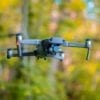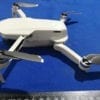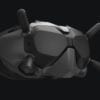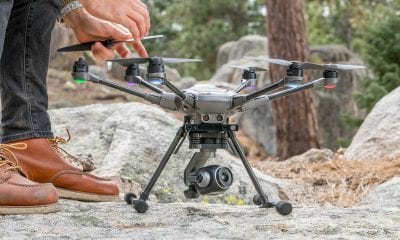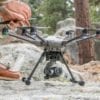Brands
DJI Upgrades its Geofencing to Enhance Airport Safety
DJI, the global drone manufacturer and a leading brand in civilian drones, recently decided to improve its geofencing technology all in order to refine the airspace limitations for drone flights near airports. The goal, according to the company, is to provide a smarter protection for airplanes in the most critical areas.
An Enormous Step Forward For Safe Integration
As the Vice President of Policy & Legal Affairs at the company, Brendan Schulman, officially stated:
“DJI is proud to once again lead the industry in developing proactive solutions for safety and security concerns. This is an enormous step forward for safely integrating drones into the airspace based on a more finely-tuned evaluation of risks associated with aircraft approaching and departing different types of airports.”
In the set of new updates, the Geospatial Environment Online (GEO) Version 2.0 will be upgraded first (starting next month) when the revised zones will focus on the airspace around airports in the United States. There are expected upgrades that will follow for airports in other regions, according to the official announcement on DJI’s website.
In short, the new system will improve geofencing in order to create a detailed and three-dimensional “bow tie” safety zones that will surround sensitive facilities instead of just simple circles. Obviously, the goal will be to improve the actual safety and tackle the risk posed in these areas all while allowing more flights to the side of runways.
Updates Needed For The New Features To Be Visible
The new features also incorporate the principles of Section 384 of the recently-enacted U.S. Federal Aviation Administration (FAA) Reauthorization Act which aims at “runway exclusion zones” for unauthorized drones. The DJI customers should update their DJI Go 4 flight control app in order to reap the benefits of the newly improved geofencing features.
In order to improve the geofencing features, the company (DJI) has partnered up with a data provider that can show accurate details such as the exact locations of airport runways as well as facility boundaries.
As Schulman has put it:
“DJI is pleased to partner with companies that support our vision of safe skies that are open to innovation. DJI pioneered geofencing for drones, as well as automatic altitude limitations, collision avoidance sensors and a mandatory knowledge quiz about safe flight rules. PrecisionHawk shares DJI’s commitment to ensuring that safety technology enhances the ability of recreational and professional drone pilots to fly.”
Safely Integrating Drones In Airspace While Preventing Accidents
Schulman also pointed out to the features of PrecisionHawk and the company’s commitment to safely integrating drones in airspace and hence enabling more complex operations.
To develop the new geofencing features, DJI also collaborated with general aviation pilots from the Aircraft Owners and Pilots Association (AOPA) and the airports covered by the American Association of Airport Executives (AAAE).
The new geofencing features will use GPS and other satellite signals in order to prevent drones from flying near sensitive locations such as airports, prisons, nuclear power plants and high-profile events.











